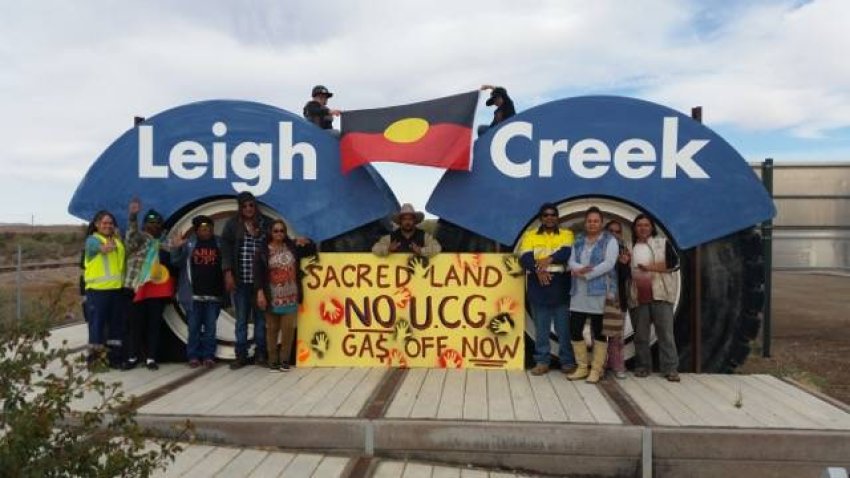
South Australia’s Liberal government gave final approval for Leigh Creek Energy to begin a three-month trial of an underground coal gasification (UCG) process on September 3. The government had previously granted a crucial environmental permit for a new UCG installation on the otherwise abandoned Leigh Creek coalfield, 550 kilometres north of Adelaide in April.
The decision comes despite UCG being banned in other states due to its devastating impacts on the environment.
Queensland banned UCG in 2016 after toxic releases from a test plant run by Linc Energy near Chinchilla, on the Darling Downs, were found to be responsible for what the state environment minister described as the worst contamination event in Queensland history.
Linc Energy — now in liquidation — was fined $4.5 million after admitting early this year to wilfully and unlawfully causing environmental harm. Five of its former CEOs face criminal charges.
None of this, however, appears to have made an impression on the Leigh Creek directors or their government backers.
UCG is not simply one of the filthiest ways ever devised for obtaining energy; it is also one of the most difficult to control. Should things go wrong with it — as they regularly have in the installations built and tested to date — the potential environmental damage is among the most horrific of any technology short of nuclear.
Merely to sanction UCG, as SA’s government has done, is recklessness of the first order.
Profits
UCG has tempted coal company executives for many decades as a way of making profits from coal seams that would otherwise be uneconomic to exploit.
The technology involves drilling into the seams, setting fire to them while injecting air or oxygen and steam under high pressure, and piping the combustion products to the surface.
What the developers are after is so-called synthesis gas, or syngas — a mixture of carbon monoxide, hydrogen and methane. Syngas can be burnt to produce electricity or used as a feedstock for producing fertilisers and other chemicals.
But syngas is not all that UCG installations turn out. Other products include what one commentary describes as “a witch’s brew of water mixed with benzene, phenols, [and] polycyclic aromatic hydrocarbons”. Almost all of these compounds are toxic, and many are known to cause cancer.
Chemically, the process is essentially the same as the production from coal of old-style “town gas”, a notoriously polluting industry whose contaminants still plague many urban areas. But while town gas was produced in sealed retorts, UCG takes place in underground chambers that may leak into groundwater and to the surface.
The only way operators have of controlling UCG is to vary the input of air/oxygen and steam. The gasifier chambers are impossible to inspect, and monitoring the process cannot be precise.
If the pressure in the gasifiers becomes greater than that of adjacent groundwater, toxic compounds may enter aquifers and migrate for long distances. Surrounding rocks may also fracture, opening pathways to the environment. Underground explosions are quite possible.
At Chinchilla, workers observed bubbling around the plant during heavy rain. They also suffered from burning sensations and nausea.
After tests found heavy contamination, the Queensland government banned landowners across a 300-square-kilometre zone from digging any hole deeper than two metres.
Contamination
Leigh Creek Energy maintains that UCG is a proven technology with success stories across the globe. But the only country ever to have employed UCG on an industrial scale was the Soviet Union, with about five plants.
Of these, the only one still operating is the Angren (Yerostigaz) plant in Uzbekistan. According to one British source, “It does not appear that any environmental monitoring [of the Angren site] has ever been carried out”.
Elsewhere, trials of the technology have resulted in a high incidence of environmental contamination.
Pilot plants in the US state of Wyoming in the 1970s and 1980s caused pollution of aquifers. Benzene levels in groundwater near one plant reached 35,000 parts per billion; a level of even a few parts per billion is considered dangerous.
Near Kingaroy in Queensland, a UCG plant operated by Cougar Energy was shut down in 2010 after benzene was detected in nearby bores.
As well as leaks, there have been dramatic accidents.
At El Tremedal in Spain in 1997, an explosion in a gasifier was reported to have “propagated up the well to the surface, causing a blowback of phenolic liquor, rupturing the well at the surface and coating the site with residue”, according to Frack Off (UK).
The trial plant that has operated at Majuba in South Africa since 2007 has experienced repeated mishaps: wells have ruptured and huge clean-ups have been required on at least two occasions.
The dangers do not cease once the product gases have left the wellhead. Still super-hot and under high pressure, and containing toxic hydrocarbons and hydrogen sulphide, the gases must be piped from the wells to a separation plant. The chances of above-ground leaks and pipeline explosions are appreciable.
Even if UCG dodges all the bullets, it remains a fossil-fuel technology. The carbon emissions it causes when used to fuel an electricity generating plant — among the plans for Leigh Creek — are marginally less than for a modern coal-fired installation.
If the planet is not to be cooked, all significant use of fossil fuels needs to be quickly phased out.
Not surprisingly, the projected UCG operation at Leigh Creek has met with bitter opposition from local Indigenous people.
After the SA government gave its environmental approval to the scheme, Adnyamathanha Traditional Lands Association CEO Vince Coulthard said he was “disgusted”.
“Our land has been desecrated enough”, Coulthard said. “The destruction and poison must stop.”